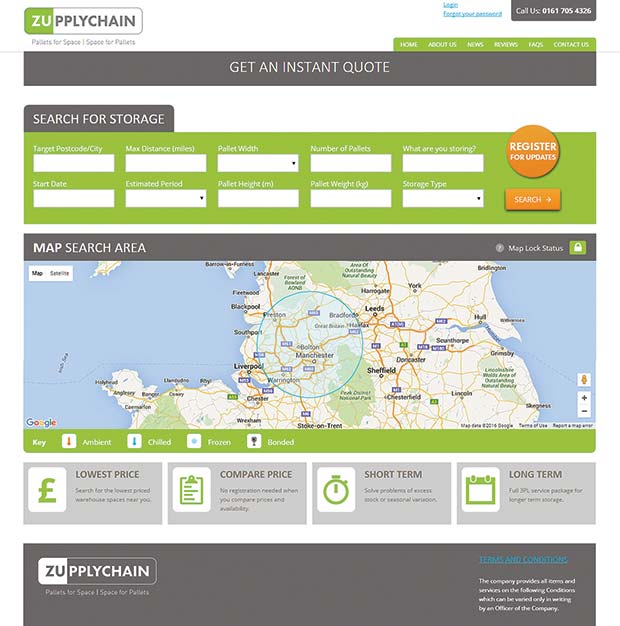New market making technologies turn up with almost daily frequency in the consumer sphere. It started with Amazon and E-bay in the 90s, with the likes of Uber, Airbnb and Just Eat growing from mavericks to mainstream in recent years. Within the logistics industry several market makers exist for backloads such as Haulage Exchange and Returnloads.
 But now similar technologies aim to re-shape the warehousing market. Flexe Inc in the United States and Zupplychain in the United Kingdom are set to transform finding warehouse space on the internet.
But now similar technologies aim to re-shape the warehousing market. Flexe Inc in the United States and Zupplychain in the United Kingdom are set to transform finding warehouse space on the internet.
Both go beyond the listing and introduction models that currently exist for finding warehouse space by enabling transparency of availability and pricing, automating the communication between warehouses and customers and providing real time on-line information on stock and movements. Flexe was the first to introduce guide pricing. Zupplychain goes even further, enabling potential customers to calculate their estimated costs with several potential suppliers and quickly come to an agreement through an automated communication system.
Flexe Inc’s MD, Karl Siebrecht articulates two key trends enabled by these new technologies on the website’s blog – the concept of ‘Pop Up Warehousing’ – essentially using short term strategically placed third party warehousing to solve specific problems – and ‘Dynamic Warehouse Networks’: a more flexible, dynamic and asset light approach to a business’ warehousing requirements.
Martin Elgood, MD of Zupplychain expands on this: ‘Zupplychain offers an alternative logistics strategy for businesses, from large to small; mature to start ups: Firstly, businesses can reduce the issues of seasonal stock builds and over-forecasting that lead to temporary peaks in stock and thus reduce their core ‘in-house’ warehousing capacity. Secondly, new E-commerce businesses, lacking resources for fixed logistics costs and unclear on mid- or long-term capacity needs can use pop-up warehousing until they have clarity on their best logistics solution. Finally, fast growing businesses can consider a dynamic warehouse strategy to upscale their logistics in line with their growth rate without the resource and capital implications of implementing themselves’.
Elgood sees businesses evolving to an out-sourced logistics strategy in three stages: ‘Emergency outsourcing’ – the short term solution to peaks in requirements, whether expected or unexpected; then, ‘tactical outsourcing’ – the mid-term approach to particular circumstances such as needing to store some products closer to a customers or a port; or for a specific contract; and, finally, ‘strategic out-sourcing’ – the long term alternative to owning, leasing and operating warehouses by building the whole supply chain around third party provision, possibly with multiple third parties for cost, service or geographical reasons. ‘Whilst many large businesses in retail and FMCG have clearly arrived at the strategic level, many SME’s often don’t go to market to solve ‘emergencies’ more effectively.
Services like Zupplychain will make it more accessible’, Elgood adds. Outsourcing logistics is not just about solving short term problems or reducing costs. It can play a fundamental part in a business’ growth strategy. As well as improving service and reducing the execution risk of new, more complex logistics requirements, it can also increase flexibility and allow businesses to be more nimble. Equally, it can free up capital to re-invest in new processes, products or markets.
After 18 months, Flexe claims to have 200 warehouses signed up. In the UK, Zupplychain – launched in February – is close to recruiting national coverage of warehouse providers and will launch its search facility to potential customers in May.




Comments are closed.